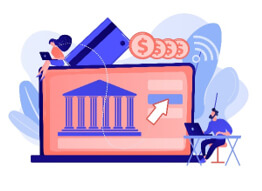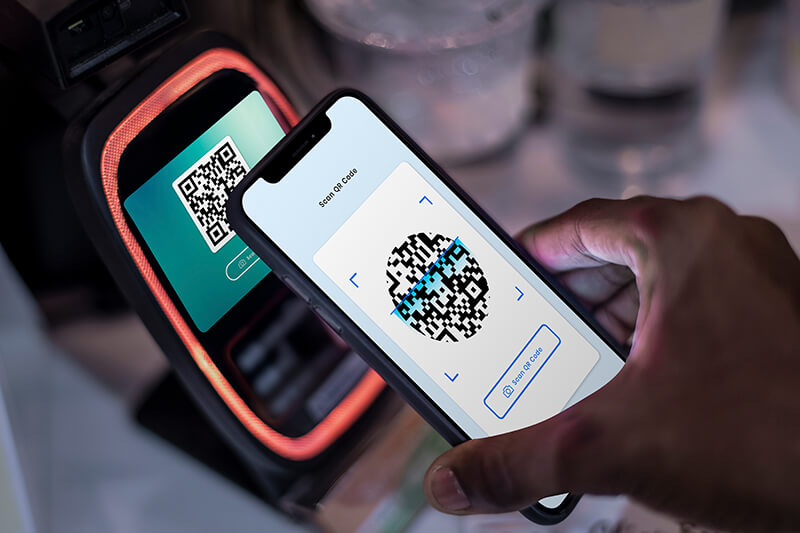Banking is an essential part of our livelihood. Yet most of us do not remember the last time we visited a physical branch. The reason behind this phenomenon is digital banking.
In this blog, we shall try to explore the facets of our behavioural change towards banking, and what banks need to keep in mind in order to compete in this era of digital banking and the future.
What is Digital Banking?
Digital banking is the digitization of the traditional banking activities and processes that were previously available to customers only when visiting a bank in person. This includes the following
- Account Services and KYC
- Money Transfers
- Checking/Saving Account Management
- Applying for Financial Products
- Loan Management and more
Is Digital Banking same as Online Banking?
One can be forgiven for thinking that both are the same, but there are some key differences between the two:
In simple terms, Online Banking otherwise commonly known as netbanking is any form of personal banking which we conduct using the internet. These include activities like checking our balance, transaction statements, paying bills or transferring funds.
For several years, Online Banking was essentially banking through laptops and desktops, but the massive advances in smartphone technology has meant that core banking functionalities can now be conducted through smart devices as well.
As online banking has significantly evolved, so have the services offered. Customers can now even apply for loans or send funds internationally with only a click of a button.
Digital banking, on the other hand, is more comprehensive in terms of its offerings and includes all forms of financial transactions that takes place with the help of technology. Many of the transactions we complete on a regular basis are some form of digital banking. One would not consider performing these activities in a bank branch. These include ordering and paying for food, booking tickets for events, paying for car parking etc.
Needless to mention, all of these activities include attractive discounts and cashbacks, which have successfully been used to get users addicted to digital platforms.
Digital banking can also refer to the numerous digital products available to businesses for their efficient survival, such as accountancy and payroll software and payment technology.
Hence, it is safe to conclude that online banking is only a subset of Digital Banking, and that Digital Banking entails a lot more than just traditional banking activities.
Top Three Values of Digital Banking
- Keeping up with the world

Traditional banks find no place among today’s consumers. Winning the battle with old-age strategy and mundane legacy processes will no longer work for banks. This is indicative of a need for digital transformation to fasten the tasks and make them more accurate and easy for the customers.We should also not forget how Covid-19 has changed the entire banking scenario. With worsening health security situations worldwide and lockdowns being imposed everywhere, more and more people have adopted net banking and now prefer carrying out banking activities from the comfort and safety of their homes.Lastly, there is an increasing shift towards financial services being offered on a digital platform. The change has been driven primarily by the growing use of smartphones and the increasingly affordable data. While most people have at least one FinTech app in their smartphone, EY recently found that 64% of FinTech users prefer digital channels to manage all aspects of their lives. The only way for banks to stay relevant with the users is by offering their services through a digital channel as well. - Better User Experience
 Customer self-service is an important part of customer experience in the banking industry. Nowadays, customers want their interactions with the banks to be intuitive and straight forward. With the rise of mobility, more and more customers are now accessing their banks through their smartphones. In fact, a BI study indicated that a whopping 97% of millennials use online or mobile banking, which helps them stay on top of their finances with personalised alerts for spends and bills. Hence, mobile banking applications are no longer a value-added service for the banks but an absolute necessity.Customer experience is turning out to be the defining competitive differentiator amongst financial service providers. Those who are investing in customer experience are experiencing a larger wallet share, higher rates of recommendations and are more likely to up-sell or cross-sell products and services to existing customers.
Customer self-service is an important part of customer experience in the banking industry. Nowadays, customers want their interactions with the banks to be intuitive and straight forward. With the rise of mobility, more and more customers are now accessing their banks through their smartphones. In fact, a BI study indicated that a whopping 97% of millennials use online or mobile banking, which helps them stay on top of their finances with personalised alerts for spends and bills. Hence, mobile banking applications are no longer a value-added service for the banks but an absolute necessity.Customer experience is turning out to be the defining competitive differentiator amongst financial service providers. Those who are investing in customer experience are experiencing a larger wallet share, higher rates of recommendations and are more likely to up-sell or cross-sell products and services to existing customers. - New Product Bundles
 Customers nowadays choose to have a mortgage with one bank, an unsecured loan with another and savings accounts with yet another. The banking relationships are fast fragmenting.This decline of customer loyalty ended up clearing a pathway for FinTechs to come into the market. The new age digital banks also demonstrated that by competing aggressively against the traditional banks on the basis of their effective customer experience journeys despite the traditional banks’ access to much more customer data. These Neo Banks gain the trust of their customers through a seamless digital experience, and then offer multiple new products to them by positioning themselves as a convenient one-stop shop for all of the customer’s needs, thereby managing to cross-sell products and making further inroads into the financial lives of their customers.If the traditional players are to keep up with their challenger counterparts and be the choice of their customers for more offerings than one, then they need to constantly interact with their customers and inform them about their offerings, and in this day and age, this is only possible through a digital medium.
Customers nowadays choose to have a mortgage with one bank, an unsecured loan with another and savings accounts with yet another. The banking relationships are fast fragmenting.This decline of customer loyalty ended up clearing a pathway for FinTechs to come into the market. The new age digital banks also demonstrated that by competing aggressively against the traditional banks on the basis of their effective customer experience journeys despite the traditional banks’ access to much more customer data. These Neo Banks gain the trust of their customers through a seamless digital experience, and then offer multiple new products to them by positioning themselves as a convenient one-stop shop for all of the customer’s needs, thereby managing to cross-sell products and making further inroads into the financial lives of their customers.If the traditional players are to keep up with their challenger counterparts and be the choice of their customers for more offerings than one, then they need to constantly interact with their customers and inform them about their offerings, and in this day and age, this is only possible through a digital medium.

For the users:
- A greater sense of control over their money
- No branch timing constraints, bank anytime
- No locational constraints, bank anywhere
- Faster solutions as compared to the slow bank personnel
- Why work harder for simple banking needs?
- Go cashless for a better planet
For the banks:
- Automate repetitive activities
- More awareness among customers about the different financial services offered
- Access to more customer data to design new and personalized products
- Easier reach, cheaper acquisition and retention of customers
- Platform to service rural areas
- Reduced risk of counterfeit currency through a more cashless economy
Apart from the above mentioned reasons, we should also be looking at a potential future benefit of digital banking. So far, we have spoken about millennials and their growing inclination towards online banking, but we should also be considering Gen Z, who have grown up in the digital era, and are so acquainted with digital platforms that it will become imperative for banks to compete on the digital front in the future, as slowly, with the older customers will be making way for the newer ones, and the banks could face customers who do not know how branch banking works, leaving the branches redundant.
Also, learn more about – Approach and Technologies for a Successful Digital Bank































